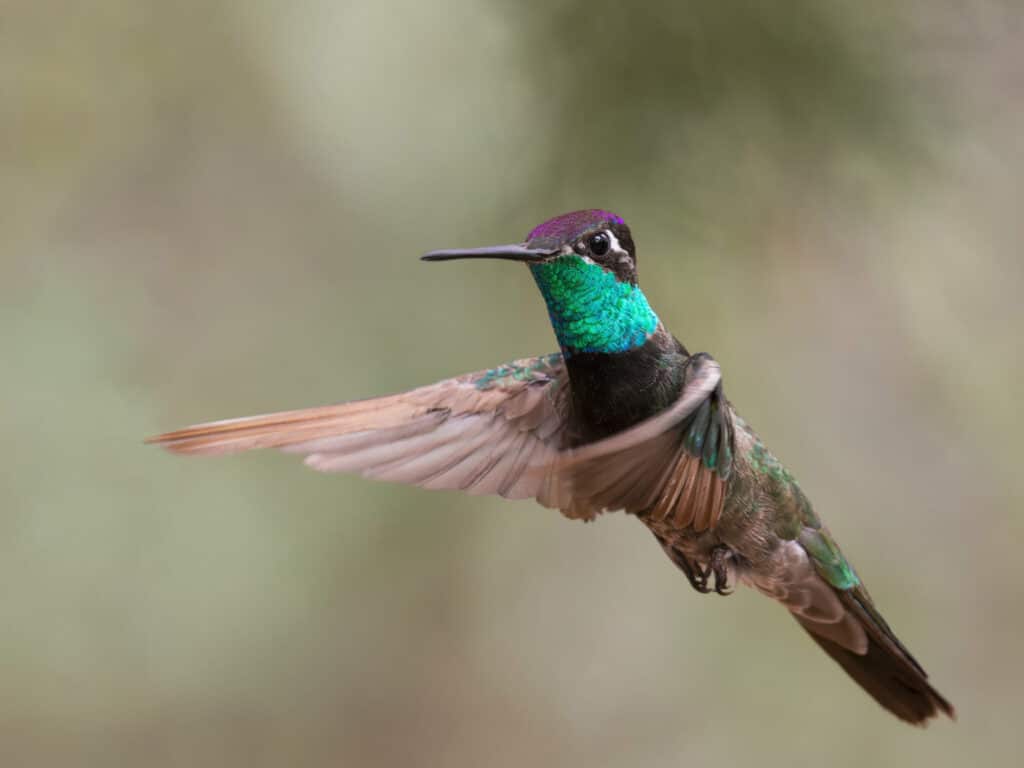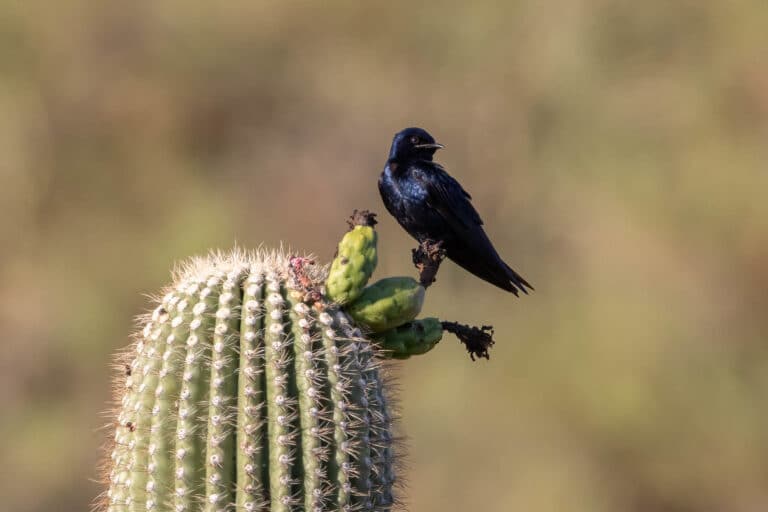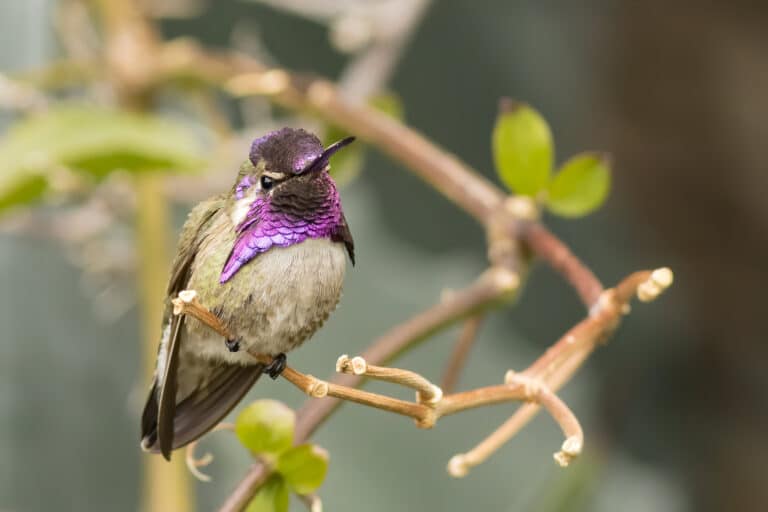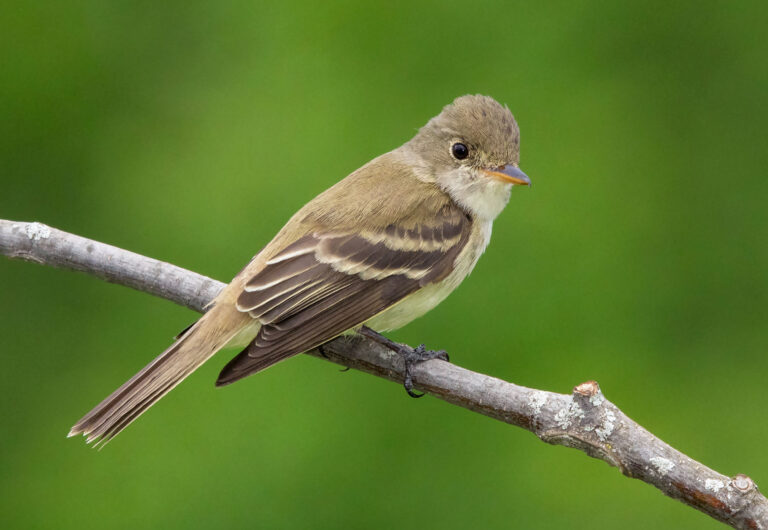The Rivoli’s Hummingbird might be the most exciting regularly occurring hummingbird in all of Southeast Arizona. It’s not super common, but it does show up in many locations in our Sky Island mountain ranges, so you have a good chance of seeing one. Even if you’re watching a bank of feeders, it’s always a treat when one pops up and shocks you with its sheer size and amazing array of colors. Rivoli’s is the second largest hummingbird in the US (only the Blue-throated Mountain-gem is bigger) and it’s a surprisingly dark hummingbird with uniquely black underparts. When you get the angle just right though, males explode in dark green and bronze color and their iridescent purple crowns and turquoise gorgets would seem to glow in the dark if the sun suddenly went black.
The species has had a rollercoaster ride of name changes over the years. It was named in 1829 in honor of the second Duke of Rivoli, an amateur ornithologist (being a region in Italy, the bird could just as well be named Rivoli Hummingbird in the same manner as California Gull and Canada Goose). In 1983 the species became the Magnificent Hummingbird, a befitting name for a beautiful bird. This name was then officially retired in 2017 when the American Ornithological Society recognized a separate species in the populations in the highlands of Panama and Costa Rica. These southern birds became the Talamanca Hummingbird and northern birds reverted back to Rivoli’s. Not the most popular move among birders, a lot of people still call them “Mags.”
Interestingly, male Rivoli’s Hummingbirds can be highly territorial in some areas, yet nonterritorial in others, seemingly dependent on the resources available. In Volcán de Colima, Mexico, and Southeast Arizona, they are not known to be territorial and are described as being “trapliners.” This feeding behavior of cycling among widely scattered flowers allows individuals to range farther without the need to defend a particular nectar source—perhaps the reason for their random appearances, even at feeders.
Find Rivoli’s Hummingbird during summer in pine/oak canyons and drainages in the mountain ranges of Southeast Arizona and New Mexico, where nests are often constructed high up in trees that overhang streams. Increase your odds by visiting feeders and hummingbird gardens in places like Madera Canyon, Cave Creek Canyon, the eastern canyons of the Huachucas, and in Summerhaven on Mt. Lemmon.
Image by Frederick Mitchell Jr.




